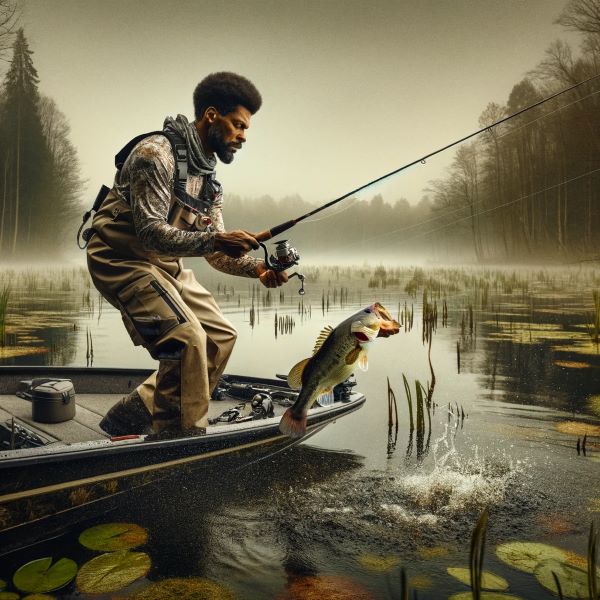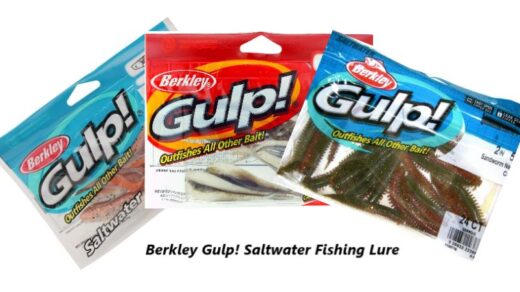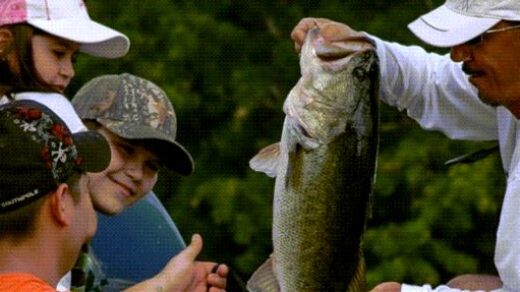Bass Fishing Strategies for Success

As the winter chill gradually relinquishes its hold on the waters, anglers eagerly anticipate the arrival of spring—a season synonymous with rejuvenation, growth, and, notably, the prelude to one of the most exhilarating periods in bass fishing: the pre-spawn. With nature’s cues triggering bass to transition from their winter lulls to the shallows in preparation for spawning, anglers find themselves presented with a prime opportunity to capitalize on the heightened activity and voracious feeding behavior of these coveted game fish.
In our exploration of pre-spawn bass fishing, we delve into the intricacies of this transitional phase, where bass exhibit a palpable sense of urgency to feed voraciously before the rigors of spawning consume their focus. From deciphering the optimal locations to deciphering the behavior patterns of pre-spawn bass, anglers are tasked with employing a nuanced approach that combines instinct, experience, and adaptability.
In this article, we embark on a journey through the realm of pre-spawn bass fishing, equipping anglers with a repertoire of strategies, techniques, and insights essential for unlocking success during this pivotal period. From understanding the biological imperatives driving bass behavior to honing the tactical prowess necessary for enticing strikes, our aim is to provide a comprehensive guide that empowers anglers to navigate the complexities of pre-spawn bass fishing with confidence and proficiency. So, tighten those lines, ready your gear, and prepare to immerse yourself in the art and science of mastering pre-spawn bass fishing.
Deciphering Pre-Spawn Behavior
As the days grow longer and the water temperatures begin their gradual ascent, bass embark on a transformative journey from their winter haunts to shallower, more fertile grounds in anticipation of the impending spawn. Understanding the nuances of pre-spawn behavior is paramount for anglers seeking to intercept these migratory movements and capitalize on the feeding frenzy that ensues.
Interpreting Water Temperatures and Conditions:
Central to deciphering pre-spawn behavior is a keen awareness of water temperatures and their influence on bass activity. As temperatures climb into the ideal range of 50 to 60 degrees Fahrenheit (10 to 15 degrees Celsius), bass initiate their migratory journey towards spawning areas. Monitoring water temperature trends using handheld thermometers or specialized fishing electronics enables anglers to pinpoint the optimal windows of opportunity when bass are most active and receptive to feeding.
Furthermore, paying close attention to water clarity and conditions can provide valuable insights into bass behavior during the pre-spawn period. Murky or stained water may prompt bass to rely more heavily on their lateral lines and other sensory mechanisms to locate prey, while clearer waters may necessitate a more finesse-oriented approach with natural-looking presentations.
Identifying High-Probability Areas:
Successful pre-spawn bass anglers possess an innate ability to identify and target high-probability areas where bass congregate en route to spawning grounds. Key areas include transitional zones such as points, channel swings, and submerged structures adjacent to shallow spawning flats. These areas serve as staging areas where bass gather to replenish energy reserves and feed voraciously before initiating the spawning process.
Additionally, submerged vegetation, particularly emergent grasses and aquatic vegetation, act as magnets for pre-spawn bass seeking refuge and abundant forage opportunities. Targeting these vegetated areas with a variety of lures and presentations can yield impressive results during the pre-spawn period.
Adapting to Changing Conditions:
Flexibility is a hallmark of successful pre-spawn bass anglers, as conditions on the water can change rapidly, necessitating adjustments to presentation styles, lure selections, and fishing strategies. As weather patterns fluctuate and frontal systems sweep across the landscape, bass may exhibit shifting behavior patterns, requiring anglers to adapt accordingly.
Moreover, experimenting with different retrieval speeds, depths, and lure profiles enables anglers to dial in on the precise presentations that trigger strikes from pre-spawn bass. Whether employing fast-moving reaction baits to elicit reactionary strikes or employing finesse techniques with soft plastics to entice wary bass, versatility is key to unlocking success during this dynamic period.
Essential Pre-Spawn Bass Fishing Techniques
Mastering pre-spawn bass fishing entails a diverse arsenal of techniques tailored to capitalize on the unique behavioral tendencies of bass during this transitional period. From power fishing with aggressive presentations to finesse techniques that tempt wary bass, anglers must deploy a strategic combination of tactics to unlock success. Below, we present a curated selection of essential pre-spawn bass fishing techniques, each meticulously crafted to maximize effectiveness during this dynamic phase.
- Lipless Crankbaits:
- Description: Lipless crankbaits mimic the frantic movements of baitfish, making them irresistible to pre-spawn bass.
- Presentation: Cast parallel to submerged vegetation and retrieve the lure with a steady, medium-paced retrieve. Pause intermittently to allow the bait to flutter and trigger reactionary strikes.
- Recommended Brands: Strike King Red Eye Shad, Rapala Rattlin’ Rap.
- Jerkbaits:
- Description: Jerkbaits excel at imitating injured baitfish, making them an effective option for enticing pre-spawn bass in cooler water temperatures.
- Presentation: Utilize a twitch-pause-retrieve cadence, imparting erratic movements to the lure to trigger aggressive strikes from bass in transitional areas.
- Recommended Brands: Megabass Vision 110, Lucky Craft Pointer.
- Jigs and Trailers:
- Description: Jigs paired with trailers offer a versatile presentation that can be tailored to match prevailing conditions and mimic natural forage.
- Presentation: Pitch or flip jigs into cover along transition zones and allow them to free-fall before initiating a subtle hopping or dragging retrieve.
- Recommended Brands: Strike King Bitsy Flip Jig, Yamamoto Flappin’ Hog Trailer.
- Texas-Rigged Soft Plastics:
- Description: Texas-rigged soft plastics excel in tempting finicky bass holding in heavy cover or along structure during the pre-spawn period.
- Presentation: Cast Texas-rigged creature baits or worms into areas of dense vegetation or submerged timber, employing a slow, methodical retrieve with occasional pauses to entice strikes.
- Recommended Brands: Zoom Brush Hog, Berkley PowerBait MaxScent The General.
- Swimbaits:
- Description: Swimbaits offer a lifelike profile and action that closely mimics baitfish, making them a favorite among pre-spawn bass anglers.
- Presentation: Retrieve swimbaits steadily at varying depths, mimicking the natural movements of forage fish. Experiment with different retrieve speeds to dial in on the most effective presentation.
- Recommended Brands: Keitech Swing Impact, Megabass Magdraft.
Gear Essentials for Pre-Spawn Bass Fishing
Equipping oneself with the appropriate gear is essential for maximizing success during the pre-spawn bass fishing season. From rods and reels designed to handle a variety of presentations to specialized terminal tackle and accessories, anglers must carefully select gear that aligns with the specific techniques and conditions encountered during this dynamic period. Below, we present a comprehensive overview of the gear essentials necessary for pre-spawn bass fishing success.
- Rods and Reels:
- Rod Type: Medium to medium-heavy casting or spinning rods ranging from 6’6″ to 7’6″ in length provide the versatility needed to effectively fish a variety of pre-spawn techniques.
- Reel Type: Low-profile baitcasting reels with a high gear ratio (7.1:1 or higher) offer the speed and power necessary for efficiently retrieving reaction baits, while spinning reels with a smooth drag system excel in finesse presentations.
| Technique | Rod | Reel |
| Lipless Crankbaits | Medium-Heavy | Baitcasting (High Gear) |
| Jerkbaits | Medium | Baitcasting (High Gear) |
| Jigs and Trailers | Medium-Heavy | Baitcasting (High Gear) |
| Texas-Rigged Soft Plastics | Medium-Heavy | Baitcasting/Spinning |
| Swimbaits | Medium-Heavy | Baitcasting (High Gear) |
- Line and Leader Material:
- Main Line: Braided fishing line ranging from 30 to 50-pound test provides the strength and sensitivity needed to handle heavy cover and set the hook with authority.
- Leader Material: Fluorocarbon leaders in 12 to 20-pound test are recommended for scenarios where stealth and abrasion resistance are crucial, such as fishing clear water or targeting wary bass.
- Terminal Tackle:
- Hooks: Wide-gap or flipping hooks in sizes ranging from 3/0 to 5/0 accommodate a variety of soft plastic baits and ensure secure hooksets.
- Weights: Tungsten or lead weights ranging from 1/4 to 1 ounce enable anglers to effectively penetrate dense cover and achieve the desired presentation depth.
- Accessories and Miscellaneous Items:
- Tackle Storage: Waterproof tackle boxes or bags keep gear organized and protected from the elements.
- Tools: Pliers, scissors, and hook sharpeners are indispensable for rigging baits, making on-the-water adjustments, and maintaining tackle.
Safety Considerations and Environmental Stewardship
While the pursuit of pre-spawn bass can be immensely rewarding, it’s essential for anglers to prioritize safety and environmental stewardship to ensure a sustainable fishing experience for generations to come. By adhering to best practices and respecting the natural environment, anglers can minimize their impact on delicate ecosystems and promote the well-being of both fish populations and the habitats they inhabit.
- Boating Safety:
- Before embarking on a pre-spawn bass fishing excursion, ensure that all safety equipment, including life jackets, navigation lights, and communication devices, is in good working order.
- Familiarize yourself with local boating regulations and navigational hazards to avoid accidents and ensure a safe and enjoyable outing.
- Practice responsible boating behavior, including observing no-wake zones, maintaining a safe distance from other vessels, and operating at a safe speed.
- Catch-and-Release Practices:
- Implement catch-and-release practices to conserve bass populations and promote sustainable fisheries. Handle fish with care, using wet hands or gloves to minimize stress and reduce the risk of injury.
- Use barbless hooks or pinch down barbs to facilitate easy hook removal and minimize damage to fish.
- Release fish promptly and in good condition, ensuring they have sufficient energy to resume normal activities after being caught.
- Environmental Conservation:
- Respect sensitive habitat areas, including spawning grounds, nesting sites, and submerged vegetation, by avoiding disturbance and minimizing habitat destruction.
- Dispose of trash and fishing line properly to prevent pollution and protect aquatic ecosystems from harm.
- Participate in conservation efforts, such as habitat restoration projects and invasive species removal initiatives, to contribute to the long-term health of bass populations and their habitats.
- Ethical Angling Practices:
- Practice ethical angling by adhering to size and bag limits, respecting fishing regulations, and treating fellow anglers with courtesy and respect.
- Educate yourself about the local ecosystem and the species you target, fostering a deeper appreciation for the natural world and the interconnectedness of all living organisms.
- Lead by example and inspire others to embrace responsible angling practices, fostering a culture of environmental stewardship within the angling community.
Weather Patterns and Their Influence on Pre-Spawn Bass Behavior
Understanding the intricate relationship between weather patterns and pre-spawn bass behavior is crucial for maximizing success on the water. As atmospheric conditions fluctuate throughout the pre-spawn period, bass respond to these changes in barometric pressure, temperature, and precipitation by adjusting their feeding patterns and migratory movements. By analyzing weather forecasts and adapting their fishing strategies accordingly, anglers can gain a competitive edge and capitalize on windows of opportunity when bass are most active and receptive to feeding.
- Barometric Pressure:
- High Pressure Systems: During periods of high barometric pressure, bass may exhibit lethargic behavior and become less active feeders. To entice strikes under these conditions, anglers should focus on slow, finesse presentations and target areas of cover and structure where bass seek refuge from bright sunlight and heightened atmospheric pressure.
- Low Pressure Systems: Conversely, low-pressure systems often stimulate increased bass activity and feeding behavior. Anglers should capitalize on these favorable conditions by deploying aggressive presentations such as topwater lures, jerkbaits, and crankbaits to trigger reactionary strikes from actively feeding bass.
- Temperature Fluctuations:
- Warm Fronts: The onset of a warm front typically signals an increase in water temperatures, stimulating pre-spawn bass to become more active and migrate towards shallower areas in preparation for spawning. Anglers should focus their efforts on targeting transitional zones and submerged structure where bass congregate to feed and replenish energy reserves.
- Cold Fronts: Conversely, the passage of a cold front can trigger a temporary slowdown in bass activity as water temperatures plummet and fish become more lethargic. Anglers should adjust their tactics accordingly by downsizing their presentations, slowing down their retrieve speeds, and targeting deeper water where bass seek refuge from the sudden drop in temperature.
- Precipitation Events:
- Rainfall: Rainfall can have a profound impact on pre-spawn bass behavior, often triggering an increase in feeding activity as runoff introduces fresh nutrients and oxygen into the water. Anglers should target areas of increased water flow, such as creek mouths, inflowing tributaries, and drainage ditches, where bass congregate to capitalize on the influx of forage.
- Post-Rain Conditions: Following a rainfall event, bass may continue to exhibit heightened feeding activity as water levels rise and baitfish become more active. Anglers should exploit these post-rain conditions by presenting lures that mimic disoriented or injured prey, such as spinnerbaits, swimbaits, and vibrating jigs.
In conclusion, mastering the art of pre-spawn bass fishing is a multifaceted endeavor that demands a combination of skill, knowledge, and adaptability. Throughout this article, we’ve explored the intricacies of pre-spawn bass behavior, essential fishing techniques, gear considerations, safety protocols, and the influence of weather patterns on angling success. From deciphering the subtle cues of transitioning bass to selecting the optimal presentations and gear for the job, anglers equipped with the right tools and insights can elevate their pre-spawn fishing game to new heights.
As we navigate the dynamic waters of pre-spawn bass fishing, it’s imperative to approach each outing with a sense of reverence for the natural world and a commitment to responsible angling practices. By prioritizing safety, environmental stewardship, and ethical behavior on the water, anglers can ensure the long-term health and sustainability of bass populations and their habitats for future generations to enjoy.
Ultimately, pre-spawn bass fishing offers anglers a thrilling opportunity to connect with nature, hone their angling skills, and experience the exhilaration of tangling with trophy-sized bass amidst the tumultuous transition of the pre-spawn period. So, as you prepare to embark on your next pre-spawn bass fishing adventure, remember to embrace the challenges, savor the moments, and immerse yourself fully in the timeless pursuit of one of freshwater angling’s most cherished quarry.




